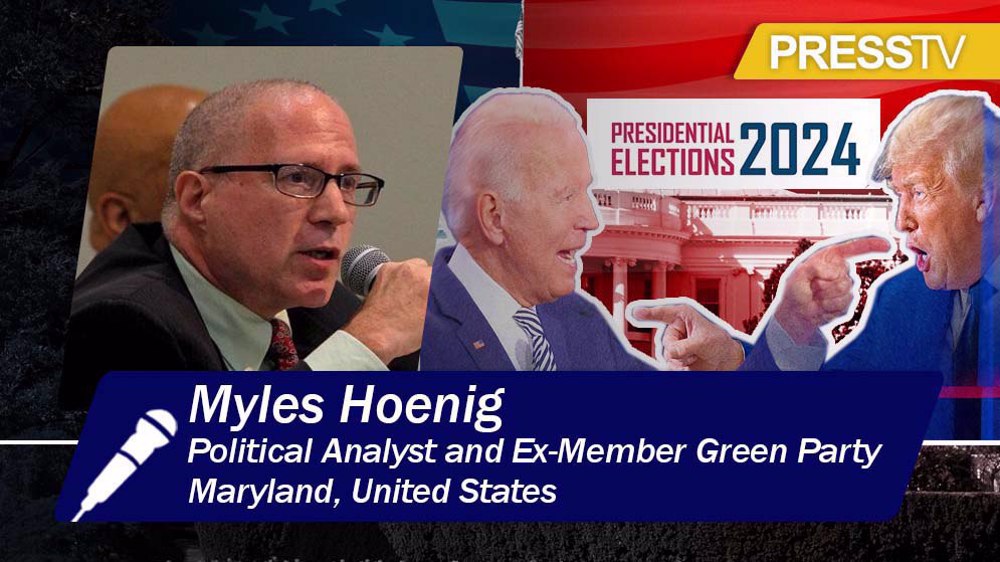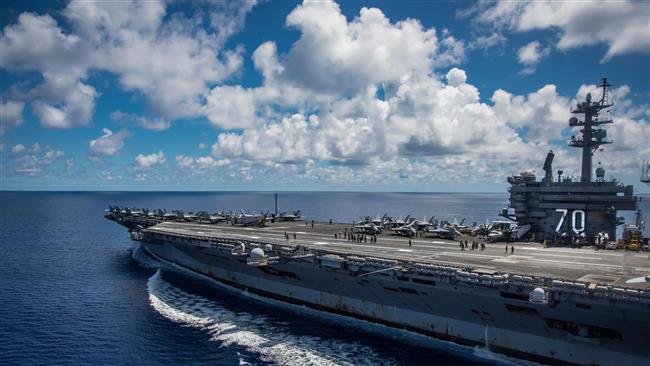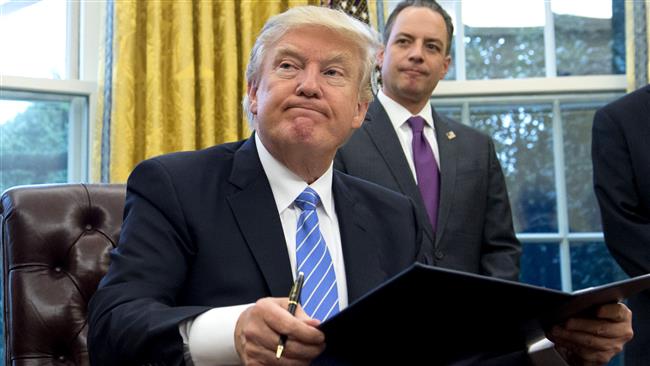Frustration rising against Trump, ruling class: Analyst
US President Donald Trump’s historically low approval ratings is leading to a growing movement against his administration and the ruling class in America, says Daniel Shaw, an analyst in New York.
Trump has set a new record low for second quarter job approval rating, becoming the least popular president early in a White House term since World War ll, according to a Gallup poll.
He averaged 38.8 percent job approval during his second quarter in office, which spanned from April 20 through July 19, Gallup’s daily tracking average shows.
“You can really feel these low approval ratings playing out across the United States as the American people are extremely displeased with his attacks on healthcare,” Shaw, a university lecturer, told Press TV on Sunday. “He is trying to gut every social program that exists.”
That is why, the analyst argued, a “movement” is taking shape against Trump and the way the country is being run.
Read More:
“Trump is an individual who personally is worth $4 billion, so he is not representative in any way of the electorate who voted for him,” Shaw added.
No other president has had a worse second-quarter average approval since Gallup began assessing approval ratings in 1945.
Former US President Bill Clinton’s second quarter approval rating was 44 percent, the only other president aside from Trump whose approval fell below 50 percent early in his administration.
The average approval rating for US presidents in their second quarter is 62 percent, meaning Trump's support is 23 percentage points below the historical norm, Gallup said.
Why Trump’s popularity sinking
Shaw said the low 55 percent voter turnout -- the lowest in the past two decades-- played a key role in Trump’s rise to the presidency.
Trump was able to defeat his Democratic rival Hillary Clinton through Electoral College votes, despite losing the popular vote to Clinton.
However, the analyst said the mainstream media should also take some of the credit.
“The media that represents the most powerful sections of this country and this ruling class comes out against the president,” he noted, pointing to examples of anti-Trump media headlines that revolve around his unpopular policies as well as his alleged “collusion” with Russia.
Shaw said the “resistant movement” against Trump was separate from the “fake” one led by Clinton and aimed at fighting racist, Islamophobic and other divisive policies.

Biden set to lose re-election over his genocidal policy in Gaza: US journalist

Frightful Biden-Trump rematch planned for November: Analyst

US Empire controlling people's minds to maintain hegemony: Scholar
Iran elected to chair judicial summit of Shanghai group in 2026
Iran FM says ready to visit Paris, Berlin, London for diplomacy
Iran petroleum minister in Russia to boost economic cooperation
Over 100 rabbis, cantors slam Trump for pro-Palestine campus crackdown
Nearly 30 Palestinians killed in fresh Israeli strikes on Gaza
VIDEO | Press TV's news headlines
FBI, local police raid homes of pro-Palestine activists in Michigan
Trump ratings low amid US economic turmoil













 This makes it easy to access the Press TV website
This makes it easy to access the Press TV website